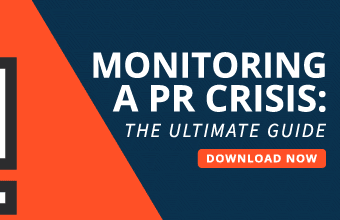On February 13, 2024, the inadvertent addition of an extra zero to Lyft’s 2024 earnings margin outlook caused shares to surge by 67 percent, only to plummet once the error was rectified later that day. This incident serves as a poignant reminder for public relations professionals of the significance of meticulous communication management and the critical importance of robust PR control structures.
 In today’s dynamic financial landscape, effective, clear and cohesive messaging is paramount for shaping stakeholders’ perceptions and upholding transparency, trust and investor confidence. In addition, regulatory bodies like the Securities and Exchange Commission (SEC) impose stringent reporting standards including maintaining internal control over financial reporting (ICFR) and disclosure controls and procedures (DCP). PR teams, in collaboration with legal, finance, and compliance departments, must ensure adherence to these standards.
In today’s dynamic financial landscape, effective, clear and cohesive messaging is paramount for shaping stakeholders’ perceptions and upholding transparency, trust and investor confidence. In addition, regulatory bodies like the Securities and Exchange Commission (SEC) impose stringent reporting standards including maintaining internal control over financial reporting (ICFR) and disclosure controls and procedures (DCP). PR teams, in collaboration with legal, finance, and compliance departments, must ensure adherence to these standards.
However, companies are increasingly managing complex communications platforms extending beyond press releases and traditional PR functions to now include sophisticated marketing campaigns and large investor relations teams. Whether it is an earnings release, a merger announcement, or a restatement of financials, accompanying communications tactics can run the gamut from press releases to social media posts to executive interviews.
The growing size and outlets for corporate communications mean that it has never been more important to take the necessary steps to ensure accuracy across every external and internal message. By integrating PR controls into the corporate governance framework, companies can mitigate risks associated with miscommunication, regulatory non-compliance, and reputational damage.
An effective PR controls structure should include these seven components:
1. Establishing entity-level controls (ELC)
PR controls should be integrated into the overall corporate governance and ELC framework. Collaboration between PR, legal, finance, and compliance teams ensures alignment with business objectives and regulatory requirements. Appropriate executive and board review needs to be implemented and consistently executed.
2. Developing and adhering to company-wide policies
PR and investor relations communications need to be governed by policies that define minimum review and approval requirements for messaging before press releases and other company-specific communications such as social media posts, investor presentations, or earnings calls are shared with the public. PR professionals must understand the impact of their messaging on stock prices, investor sentiment, and compliance. Awareness of materiality thresholds and quiet periods is also crucial.
3. Evaluate your PR process and control structure
For any external communications, a company must evaluate, document, and communicate its process of collecting the data, building the narrative, and ensuring appropriate checks and balances of “every” word, number, and metric are performed thoroughly via multiple independent reviewers.
4. Institute a “no last-minute changes” policy
While creativity and perfect wording are valuable, last-minute changes and reconciliations can be detrimental. The benefits of these changes may outweigh the incremental risk created by last-second alterations. Implement a 48-hour rule to ensure no changes are made to the original document to allow for multiple independent reviews and a ‘fresh’ set of eyes.
5. Create a single source of truth
Tracking down correct data points or numbers across an enterprise for use in communications is a constant struggle for PR pros. The use of a systematic platform such as Workiva can connect the various sources of data to various documents and ensure everyone is working from the same source of truth.
6. Enact continuous monitoring
Continuous monitoring of PR activities ensures consistency and compliance, as well as encouraging employee engagement. It’s important to conduct regular evaluations of processes and procedures to identify areas for improvement. Speaking to key stakeholders can also identify potential gaps in control structures that need to be rectified. Based on the findings, policy or procedural changes must then be clearly and consistently transmitted to all involved stakeholders.
7. Work with an experienced professional team
Designing an effective PR controls structure can be a daunting endeavor. It should also be implemented to work within any company’s enterprise-wide controls structure, an already complex and carefully crafted structure on its own. For this reason, it is important to work with an expert team who can help you identify, prioritize, and create solutions to comprehensively manage your enterprise’s governance, risks, and compliance obligations.
Crafting a PR narrative is like laying the foundation for a skyscraper: one misstep can lead to costly repercussions. To safeguard reputation and trust, companies must create meticulous processes and internal controls surrounding all communications. This ensures accuracy, shielding against potential financial pitfalls and regulatory penalties while also reinforcing the trust among your key stakeholders.








